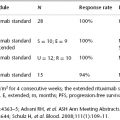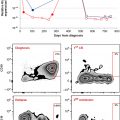Hepatobiliary Cancer
Tufts University School of Medicine, Boston, MA, USA
1. How do various risk factors for liver disease contribute to hepatocellular carcinoma (HCC)?
The incidence of HCC has almost tripled in the United States over the past few decades. Most patients have underlying cirrhosis due to one or more etiologies.
Hepatitis C incidence has risen rapidly in the United States and around the world over the past few decades, and is becoming the most important cause of HCC in many parts of the world. Although known to be transmitted through blood–blood contact, many patients are unaware of any incident that might have caused their infection. Besides sharing dirty needles from illicit drugs or tattoos, iatrogenic causes such as blood transfusions or vaccinations are potential vectors. It is an infection that is relatively difficult to transmit sexually or with close contact compared to hepatitis B or HIV.
Unlike HBV, which leads to carcinogenesis through viral DNA integration and elaboration of the HBx protein, HCV has other methods of carcinogenesis. As an RNA virus, HCV may produce oncogenic proteins and cytokines that can cause chronic irritation, eventually leading to HCC. The timing, when known, seems to be over 20 years, and annual incidence is about 5%.
Much HCC around the world is probably still caused by alcoholic damage. It has been estimated that up to 50% of cirrhotics who die may have evidence of subclinical HCC at autopsy. The incidence rises with total lifetime alcohol consumption, but is actually more common in those who are able to stop drinking heavily, and who therefore do not die early of liver failure. Metabolism of ethanol leads to oxidative stress and accumulation of acetaldehyde, causing hepatocellular damage.
Diabetes, metabolic syndrome, obesity, and fatty liver may actually now be most responsible for the tripling of incidence of HCC over the past few decades, as the general population becomes more overweight. Although not usually a cause of cirrhosis, hepatic steatosis and nonalcoholic fatty liver disease, through accumulation of fatty acids within cells, can lead to fibrosis and HCC in some proportion of patients. Interestingly, coffee consumption may be linked to a lower incidence of HCC.
2. What is the role for HCC screening?
The primary goal of screening programs for cancer is to reduce mortality. Pretest probability influences the positive predictive value of any screening program, so most studies have been done in populations expected to have higher incidences of HCC, such as those with chronic HBV or HCV infection. Native Alaskans, who have a high incidence of hepatitis B infection, have demonstrated that screening may increase resectability and reduce HCC-related mortality (although the most frequent cause of an elevated AFP was pregnancy). A Shanghai population (also hepatitis B) was randomized to screening with AFP and ultrasound, and this was found to lead to a 47% incidence of resectability, with a 37% reduction in HCC-related mortality. However, analyses of the literature are unable to reach a definitely positive conclusion. The HCV epidemic has led to many large-scale screening programs. This is not yet fully implemented, and there is no universal agreement as to their effectiveness.
Despite this, some cirrhotic patients undergoing screening may have tumors that are not amenable to potentially curative treatment. Mortality of any surgery in liver disease may be between 15% and 50%. Therefore, the mere finding of a tumor might not significantly change mortality. However, in the era of easy availability of local treatment options for intrahepatic tumors, there are now options that might prolong an individual’s survival. Indeed, there has been a marked prolongation of OS in the HCC population since 1990, and almost all of this has been in the patients who present with localized disease amenable to intervention.
Several studies modeled the most common form of screening (AFP and ultrasound every 6 months) and found it to be cost-effective, when compared to other accepted screening programs such as mammography and colonoscopy. In terms of further screening, there is currently a CDC recommendation that everyone in the population born between 1945 and 1965 be screened for HCV infection, since it is so common. This might lead to early treatment for some patients, especially given the availability of new antiviral agents. Treatment of HCV with interferon alone or with ribavirin can decrease the incidence of HCC by 80%; this is not universally seen, however. The effect of the newer, more potent antivirals is unknown but might even be better.
3. Does the patient in Case study 90.1 require a biopsy for diagnosis of HCC?
A solitary growing lesion in a cirrhotic liver is most likely to be HCC. A rising AFP raises the likelihood, and a value greater than 500 ng/ml indicates HCC with a certainty of over 90% (although a minimal elevation is not informative). Although not all HCC produces elevated AFP, the serum level may actually be prognostic as well as diagnostic. MRI with dynamic characteristics such as a lesion of greater than 2 cm, early contrast with late washout, leads to a 90–100% chance of a lesion being HCC on biopsy. PET scans are variably helpful, as only approximately 64% of HCC lesions accumulate FDG.
The issue occasionally arises of a new solitary lesion within a cirrhotic liver in a patient known to have another cancer. In this circumstance, biopsy is probably necessary to try to insure the proper systemic therapy. However, several autopsy studies showed that even in the setting of widespread adenocarcinoma of the stomach or esophagus, liver lesions in cirrhotics were still most likely to be HCC.
Biopsies are most needed when the patient takes part in a clinical trial. Given the proliferation of known and suspected biologic markers and targets in potential HCC therapeutics, molecular characterization has become crucial in these lesions. Presumably, as treatment becomes more specific and sophisticated, biopsies will be required to guide therapy. Even now, we are learning that different metastases in many cancers have different genetic signatures, implying that multiple options may be necessary for multifocal tumors. In addition, evaluation of the surrounding liver tissue may become important, as this influences recurrence rates independently of tumor tissue characteristics. In the setting of multifocal HCC, approximately 25 to 50% of lesions in an individual may be metastases, and the rest may be secondary, unrelated primaries. Following resection, early recurrences were found to be intrahepatic metastases, while late hepatic recurrences were second primaries.
Currently, since most options revolve around local ablative techniques, biopsy of a lesion clinically certain to be HCC is not generally performed off study. There are some lesions that, no matter what they are, can only best be treated with local therapy such as radiofrequency ablation. In this setting, we frequently perform the biopsy at the same time as the ablation in order to avoid a second procedure for the patient.
4. What are the risks associated with liver biopsy for diagnosis of HCC?







